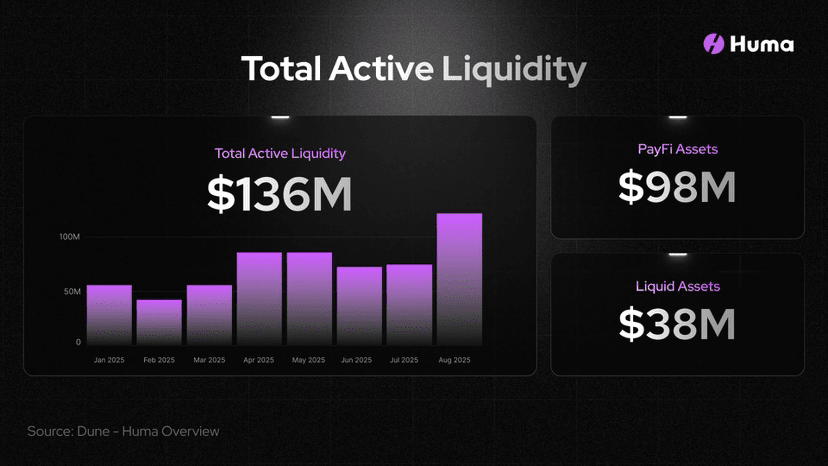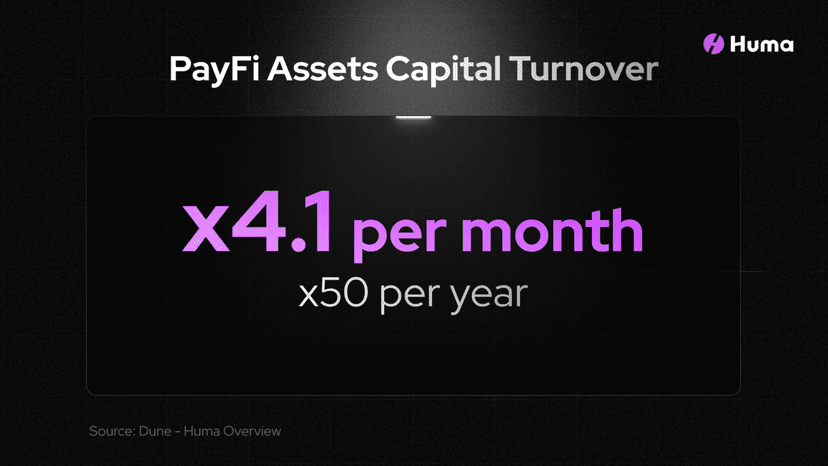Building infrastructure, technology is only half the battle; operating it is key. Huma's approach tightly binds 'usage' and 'tokens' together: those who provide liquidity, drive trading volume, and bring real payments on-chain will receive more $HUMA rewards and rights— a typical 'usage-driven token'.
First, let's look at the dual track of network and product. One track is Huma Institutional (permissioned) aimed at institutions and qualified investors; the other track is Huma 2.0 (on Solana, permissionless, composable) aimed at all users. The latter turns the earnings from real payment financing into splitable and transferable DeFi components through a Classic/Maxi dual mode, PST LP credentials, and ecosystem integration (Jupiter, Kamino, etc.), allowing LPs to use the same underlying earnings for more strategies.
The 'hard indicators' of trading and growth are also accumulating:
In November 2024, it was officially stated that historical transaction volume had exceeded $2 billion;
By May 2025, the airdrop article was updated to show a cumulative total of over $4.4 billion in two years;
At the same time, Huma co-hosted events like the PayFi Summit with the Solana Foundation, continuously pushing the theme of 'payment financing' into the industry. All of this is an explicit signal of 'the network is being used' (note the different data standards at various time points).
HUMA's functions mainly cover three areas:
1. Utility/settlement: In the Huma system, HUMA is used to reward LPs, give multipliers to stakers, and promote ecosystem integration; Binance's research page also emphasizes its role in 'launching and growing' incentive programs;
2. After governance TGE, governance tools will be gradually opened, allowing token holders to propose and vote on parameter adjustments and value distribution;
3. Airdrops and distributions: Season 0 airdrop allocated 5% of the total supply to LP/ecosystem/community, and subsequent rolling incentives will be based on 'real contributions and trading volume'.
Why are LPs willing to come? Two points:
Earnings have a 'real anchor': originating from real payment financing activities (such as merchant repayments, accounts receivable, salary advances, etc.), and are less correlated with market bull and bear cycles;
Strategies are composable: after obtaining PST, you can enjoy the underlying PayFi earnings while also collateralizing/circulating/hedging in the Solana ecosystem, maximizing the same underlying cash flow. This makes 'capital efficiency' rather than 'pure annual percentage figures' the focus of LP decision-making.
Ecosystem and brand aspects are also accelerating:
In 2025, Binance Launchpool launched $HUMA as the 70th project (total supply of 10 billion, Launchpool reward of 2.5%), expanding the visibility and distribution of the token;
Multiple media outlets reported on the $38 million financing and the strategy of 'bringing high-yield RWA to the platform', indicating that the funding side is also expanding.
Like operating a 'cash flow highway':
Traffic (demand) comes from real payment and receivable financing orders;
Road rights (contracts) are maintained by audited contracts and risk control logic;
Pass (HUMA) incentivizes maintainers, rewards suppliers, and coordinates governance;
The charging port (settlement) crystallizes each real usage into the distribution of tokens and cash. The benefit of this model is that as long as the 'vehicle' is indeed running, the network collects 'toll fees', and the tokens have 'value in use, not just talk'.
Areas that require calm reflection:
'70%-90% withdrawable limit' statements primarily come from community education, not a unified commitment; the limit is influenced by liquidity pool strategies, risk scores, repayment performance, etc.; stablecoin payments and card organization networks are advancing rapidly (stablecoin capability upgrades from Mastercard, etc.), which is favorable for PayFi, but also means you need to pay attention to compliance, integration, and risk control—three old topics.
HUMA's value does not rely on 'emotional premiums', but rather on each instance of real financing and settlement. When the chain from 'real orders → real earnings → real distribution' is continuously operational, PayFi is not just a concept but a business that can calculate accounts and sustain for the long term.




